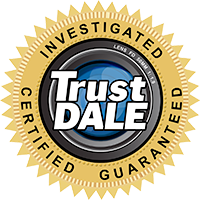The Hidden Threat Below: The Dangers of Musty Odors and Mold in Crawl Spaces

"The Stack Effect" How cold air moves in through lower levels, is heated, and leaves through the upper levels.
Maintaining a clean and healthy crawl space is crucial for the overall well-being of your home and your health. However, many homeowners overlook this hidden area, unaware of the potential dangers lurking beneath. Musty odors and mold in crawl spaces are not only unsightly and unpleasant, but they can also pose serious risks to your property and your respiratory health. In this blog post, we will explore the causes and signs of mold and musty odors in crawl spaces, provide practical tips for prevention, and offer guidance on addressing these issues effectively.
Causes and Signs of Mold and Musty Odors:
Crawl spaces are vulnerable to moisture buildup, making them an ideal breeding ground for mold growth. Common causes include lack of a crawl space encapsulation, plumbing leaks, groundwater seepage, and high humidity levels. The signs of mold and musty odors in crawl spaces may include visible mold growth on surfaces, a pungent, earthy smell, discoloration or staining on walls or insulation, and increased allergy symptoms among residents. Mold species commonly found in crawl spaces include Aspergillus, Penicillium, Stachybotrys (black mold), and Cladosporium.
Prevention Tips for Mold and Musty Odors:
1. Regular inspections: Conduct routine inspections of the crawl space, looking for signs of moisture, leaks, or mold growth. Address issues promptly to prevent further damage. If you suspect issues in your crawl space, call a reputable company such as Frontier Foundation & Crawl Space Repair to provide you with a Free Inspection and Estimate for repair.
2. Control moisture: Address any plumbing leaks promptly and divert water away from the foundation. Install a vapor barrier on the crawl space floor to prevent moisture from seeping through.
3. Proper drainage: Ensure that the area around the crawl space is properly graded to direct water away from the foundation. Install gutters and downspout extensions to prevent water from pooling nearby.
4. Seal and insulate: Crawl space sealing and insulation will help you avoid unnecessary repairs, create a healthier living space, and save money on your utility bills. As an added bonus, once you've encapsulated your crawl space with a vapor barrier, you've gained valuable storage space in your home.
5. Homes have never been completely airtight structures, and over the years outside air is given more and more access through both the changes you've decided to make to it and the natural decay of building products. This allows humid air to get into your crawl space, where it inevitably condenses and begins to cause problems. Warm air rises and exits through upper windows and the roof, creating a vacuum in your home. In below-grade spaces, this void is filled with humid air drawn from the outside. Once in your crawl space, this air condenses and leaves standing water before it works its way up and out of the home. Known as the stack effect, this process will worsen over time and create mold and wood rot while hurting your energy efficiency. Consider using a dehumidifier in a properly sealed crawl space.
Health Risks Associated with Mold Exposure:
Exposure to mold in crawl spaces can lead to various health issues, particularly for individuals with respiratory conditions, allergies, or weakened immune systems. Common symptoms include nasal congestion, coughing, wheezing, throat irritation, eye irritation, skin rashes, and exacerbated asthma symptoms. Prolonged exposure to certain types of mold, such as Stachybotrys, may result in more severe health effects. If you suspect mold exposure, consult a healthcare professional for a proper evaluation and guidance.
Professionals Who Can Help:
If you encounter persistent mold or musty odor problems in your crawl space, it is advisable to seek professional assistance. Consider contacting the following experts:
1. Crawl space inspectors: Frontier Foundation & Crawl Space Repair can assess the condition of your crawl space, identify potential issues, and provide recommendations for remediation.
2. Mold testing specialists: They can perform air and surface sampling to identify the type and extent of mold present in your crawl space.
3. Mold remediation services: Certified mold remediation experts can safely remove mold, clean affected areas, and prevent further growth.
Maintaining a clean and dry crawl space is vital for the health and integrity of your home. By taking proactive measures such as proper ventilation, moisture control, regular inspections, and prompt remediation, you can prevent mold and musty odors from wreaking havoc. Be vigilant about any signs of mold or musty odors in your crawl space and take action promptly to protect your property and your health. Don't underestimate the hidden threat below – take control of your crawl space and create a safe, healthy environment for you and your loved ones. Remember, your crawl space deserves attention too!
 4.9
4.9 



